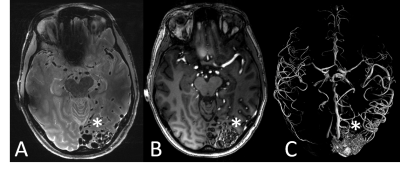MR Physics & Techniques for Clinicians (4)
MR Physics & Techniques for Clinicians
Weekday Course
Weekday Course
ORGANIZERS: Bernd Jung, Marcus Alley, Dong-Hyun Kim
Thursday, 16 May 2019
| Room 710A | 16:00 - 18:00 | Moderators: Marcus Alley, Do-sik hwang |
Skill Level: Basic to Intermediate
Session Number: TH-01
Overview
This two-hour course will be a basic and comprehensive review of MRI physics and techniques. The presentations will be non-mathematical and suitable for clinicians and physicists new to the field. The course will cover the basic principles of MR physics (signal generation, encoding, and relaxation) and image quality.
Target Audience
This course is primarily designed for the clinician who will benefit from an understanding of the "hows" and "whys" of MR imaging. While it requires no prior experience with MR, those with some familiarity and experience will also benefit. Those interested may include: radiologists and clinicians relatively new to MR imaging (including residents and fellows), experienced radiologists and clinicians wanting a refresher course in MR physics, and physicists and engineers wanting an introduction to the field.
Educational Objectives
As a result of attending this course, participants should be able to:
- Define and describe the fundamental principles of MR imaging including the definition of spin magnetization;
- Explain the Larmor relationship, relaxation phenomena, and the process of using the spin magnetization to produce an image; and
- Describe how changing acquisition parameters impacts on the image quality and understand the parameter relationships.
Overview
This two-hour course will be a basic and comprehensive review of MRI physics and techniques. The presentations will be non-mathematical and suitable for clinicians and physicists new to the field. The course will cover the basic principles of MR physics (signal generation, encoding, and relaxation) and image quality.
Target Audience
This course is primarily designed for the clinician who will benefit from an understanding of the "hows" and "whys" of MR imaging. While it requires no prior experience with MR, those with some familiarity and experience will also benefit. Those interested may include: radiologists and clinicians relatively new to MR imaging (including residents and fellows), experienced radiologists and clinicians wanting a refresher course in MR physics, and physicists and engineers wanting an introduction to the field.
Educational Objectives
As a result of attending this course, participants should be able to:
- Define and describe the fundamental principles of MR imaging including the definition of spin magnetization;
- Explain the Larmor relationship, relaxation phenomena, and the process of using the spin magnetization to produce an image; and
- Describe how changing acquisition parameters impacts on the image quality and understand the parameter relationships.
| 16:00 |
Contrast Agents Video Permission Withheld
Val Runge
The gadolinium chelates (the GBCAs) are critical to disease diagnosis by MR, indeed to clinical medicine worldwide, and have proven to be overall a very safe class of contrast media. This review focuses on the current knowledge regarding accumulation of gadolinium in the brain (dentate nucleus and other structures) and body, with clinical recommendations based on that and other safety data, including in depth discussion of the European Medicines Agency (EMA) ruling. Also, it is important to recognize that the discussion of dechelation and long term deposition in the brain and body of insoluble Gd and Gd bound to macromolecules (not as the injected chelate) involves only the linear Gd chelates.
|
|
| 16:40 |
 |
High Field Imaging Video Permission Withheld
Harald Quick
With more than 80 installed MRI systems worldwide operating at a magnetic field strength of 7 Tesla or higher, ultra-high field (UHF) MRI has been established as a platform for clinically oriented research in recent years. Profound technical and methodological developments have helped to overcome the inherent physical challenges of UHF radiofrequency (RF) signal homogenization in the human body. The ongoing development of dedicated transmit/receive RF coil arrays was pivotal in realizing UHF body MRI, beyond mere brain imaging applications. Against this backdrop, UHF MRI recently has demonstrated capabilities and potentials for clinical diagnostics in a variety of studies.
|
| 17:20 |
Artifacts to Artefacts Video Permission Withheld
Vikas Gulani
The appearance, causes and pathways to avoidance or alleviation of various commonly encountered MR imaging artifacts will be discussed.
|
|
| 18:00 |
Adjournment |
 Back to Program-at-a-Glance |
Back to Program-at-a-Glance |  Back to Top
Back to Top